Testing and Usage Continued
One side of the unit has nothing of interest, and the other a plate screwed onto the case with details of replacing the 12v, 4.5Ah battery.
The top of the MCP100 has an array of knobs, buttons, sliders, inputs and indicators. Knobs consist of nice big volume control, Guitar Volume, Mic Echo, and Mic Volume. There’s just one corded mic input (compared to the 2 on the MCP50), but you do have a guitar input which the MCP50 doesn’t.
There’s a SD memory card slot as well as a USB stick port, exactly like you have on the MCP50. With these you can easily play tracks directly from MP3 files without the need to use Bluetooth or a cable connection.
Buttons consist of Repeat, previous track, pause/play and next track. The final button switches the input between AUX, BT, USB & SD Card. Again this is exactly as per the MCP50. An additional button on the MCP100 is the Karaoke Mode On/off.
Finally there are indicators for Power, Charge, USB / SD signal and BT. None of these controls needs much explaining.
As with the MCP50, the power indicator is a very bright blue. When you power up, you not only get this shining in your face but also blue lights on the USB indicator and the tops of the 5 band “proportional regulator”. That’s a graphic equalizer to the rest of us. It’s very pretty of course, but my eyes find it difficult to read the text on the top of the unit – I’m seemingly blinded by the lights.
The equalizer has bands ranging from 100Hz to 10Khz, and give you some control over bass, midrange and highend frequencies of sound. You’ll need to play around with this a little to get an idea of just how different you can tweak the sound.
The MCP100 comes with a wireless mic which needs two AA batteries. It’s a bit of a struggle to get them in at first. It’s quite a long black mic, with a purple end and feels comfortable to hold. There’s a switch which moves from off to mute to on. A small red LED lights up when the battery life is low, but nothing to indicate the mic is turned on so remember to power it off after use. The mic is branded with the Pure Acoustics logo.
Before using the MCP100 I did the recommended task of charging the battery for 12 hours or more. The booklet suggests you give it this long charge at least the first 3 times. It also states that you should give it a full 24 hours charge when the battery is almost or completely depleted. This does seem to be a long time for a battery charge, however I think that it pays back with a good strong battery life. Finally still on the battery subject, it suggests to recharge once every 3 months if it’s sitting dormant to avoid battery failure.
Just like the MCP50, the power buttons seem to be more complicated than they need to be. I’m used to just turning something on or off, I don’t normally need to tell it to use battery or mains but I’ll get used to it although found myself explaining it to other members of the family multiple times. If the DC power is selected, the power remains on, even when the main power switch is set to off. To charge you set it to neither on or off. A bit confusing at first. Maybe I’m just getting old.
Setting up the BlueTooth connection to my Samsung S4 took just a few seconds. A press of the Input Switching button switches the blue lamp from USB to BT, some bleeping takes place and a scan on the phone found the device and pairing was done.
I tried a host of other BT enabled devices and didn’t run into any problems. If you don’t want to connect using BT, you have the other inputs of course. I’ll rarely use the SD or USB connections, but the AUX is useful to hook up to the laptop, and the 3.5mm jack could be good to plug in an old MP3 player. You’ll need to find your own cables, none are supplied with the unit (other than the power cord).
Inside the case you’ve got two speakers, an 8” woofer and a 3” tweeter. I expected a bit more to be honest, this is exactly the same configuration as on the MCP50. Power output is 30W (450W PMPO). So despite the larger size case, the sound is going to be similar. Whilst it’s certainly loud enough, even after playing with the equalizer I was never really “happy” with it’s clarity as a music listening device – however that’s not really what it is so I can put that aside.
When I first powered up the unit, I noticed a quiet hum. No matter what knobs or controls I played with, this remained. It sounds almost like a fan humming away. It’s not dis-similar to what many guitar amps suffer from when they are idle.
Once you start pushing some sounds through it of course you don’t hear it – unless you are sitting right next to it, so maybe it’s not really an issue that I need to worry about too much.
I played a number of different types of music, through BlueTooth and with a cable from the laptop. There’s no real difference here, although of course with BT you need to make sure you don’t move too far away with the source device otherwise you’ll start to get drop-outs and potentially lost connections. I’ve mainly tested this in outdoor environments so not to annoy the neighbours too much. Even at high volumes there’s very little distortion, which is great for parties. Bass is good too, I’ve no complaints there. Overall though the sound isn’t as crisp as you’d get from a dedicated piece of HI-FI equipment and some decent speakers – but I never expected that.
As a PA unit, it works as expected. Simply use the wireless mic supplied and turn up the mic volume to the required level – and speak. You can also use a wired mic here, alongside the wireless mic – so you can have two people talking at once, good for public interview situations perhaps. I did have some problems with loud random clicks coming from the MCP100 and didn’t quite work out what caused this. At first I thought it was perhaps some interference, but having used it in the middle of a forest far from any other electrical devices I ruled this out. Perhaps it’s just a mic problem. For this reason I can’t recommend using at an event where it’s crucial not to have these kind of issues, unless I can rule out that it’s something I’m doing wrong. For family and friends events, and even small venues I think we all expect those mic hiccups from time to time, so again I’m not going to make a big thing of it.
The karaoke functions well, and we’ve spent many an hour standing in the forest around a camp fire singing through this and having a lot of fun. The karaoke button should be used when singing, and you can add an element of echo by adjusting this controller. This function alone can be quite amusing, especially for the younger members of the family.

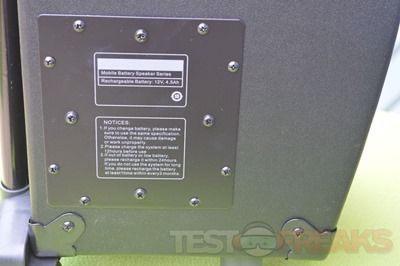
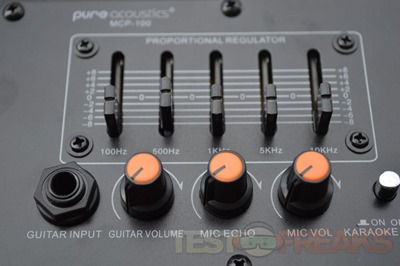
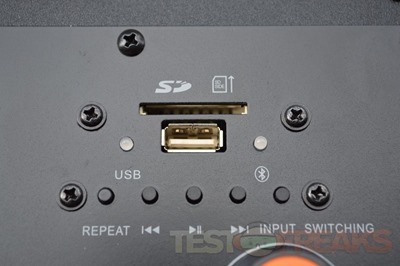
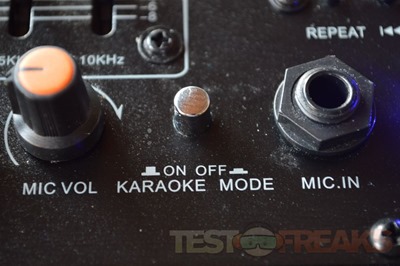
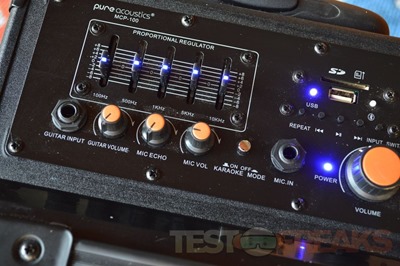
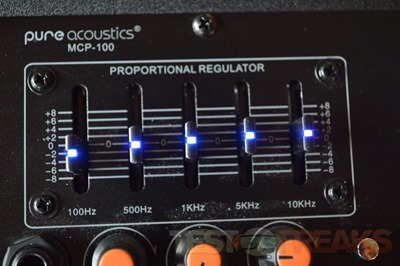
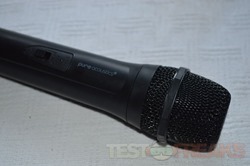
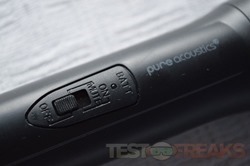
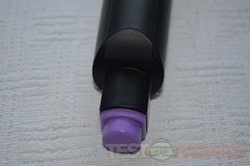

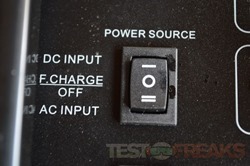
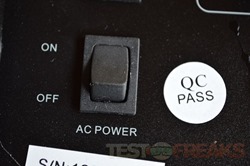
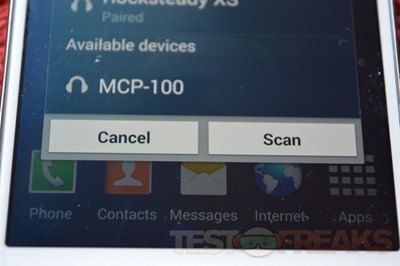
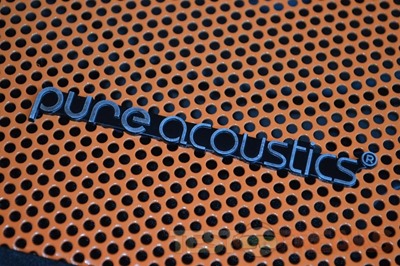

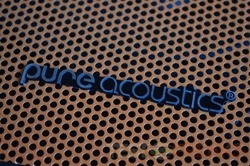
4 comments for “Review of Pure Acoustics MCP-100 Bluetooth Portable Entertainment System”